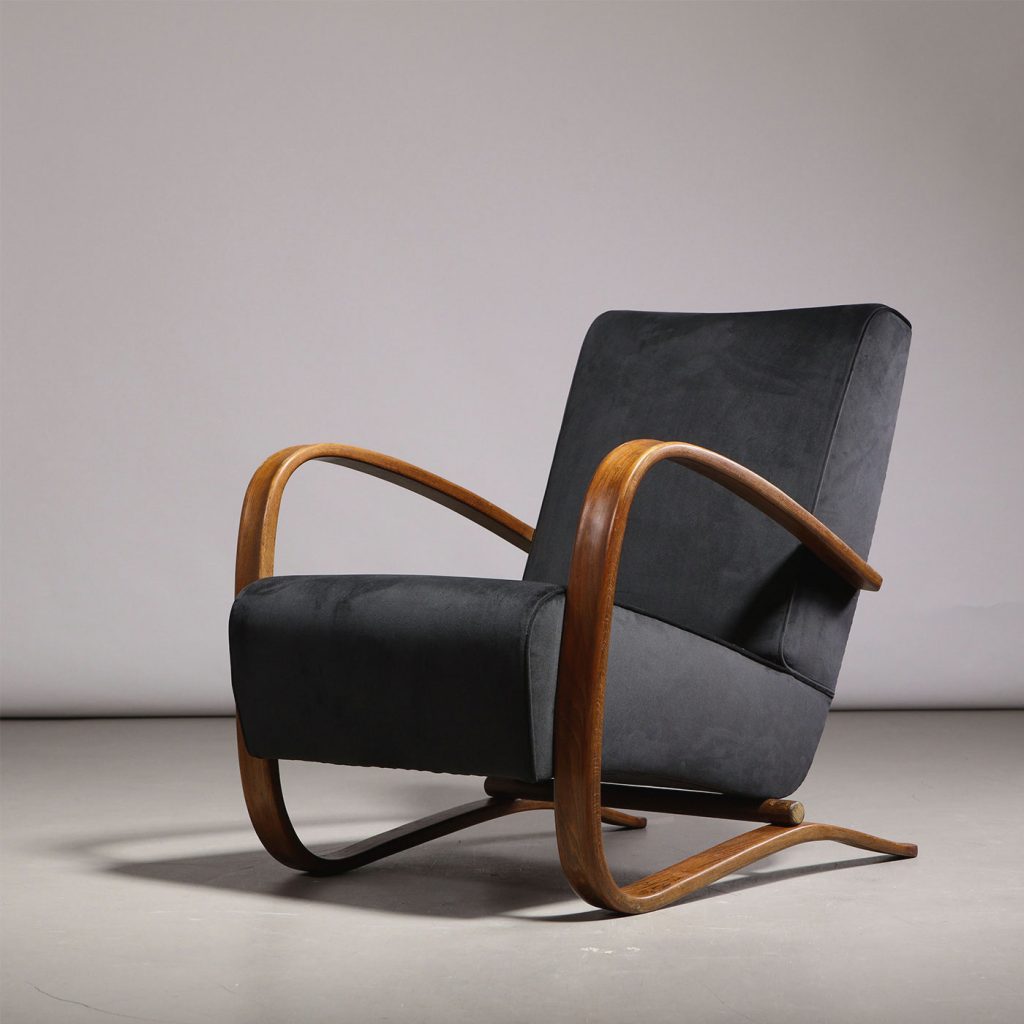Jindřich Halabala
Renowned Czech designer and educator Jindřich Halabala (1903-1978) was known above all for his distinctive style of furniture designs he created for UP závody in Brno between the 1920s and the 1950s, where he served as chief designer, a position that strongly helped him to fundamentally influence the appearance of inter-war and post-war Czech households. There, Halabala also met the company’s founder, renowned Czech architect Jan Vaňek (1891-1962).
Jindřich Halabala was born into the family of cabinetmaker Štěpán Halabala whose work he learned in a family business in the late 1910s. During the 1930s, Jindřich Halabala developed the famous H series as well as a range of different wooden and tubular steel furniture models, mainly inspired by Dutch architect and designer Mart Stam (1899-1986) and Hungarian-German modernist architect and designer Marcel Breuer (1902-1981). These functionalist designs, which were produced in the manufacturer’s branch in the town of Hodonín, are today highly sought-after collectible items.
Focusing primarily on woodwork, first at the State Czechoslovak Vocational School for Wood Processing in the town of Valašské Meziříčí and later at UP závody in Brno, Halabala designed a wide selection of furniture highlighted mainly by great attention to detail and superb sculptural quality, making them hence unequal in their unique appearance. Halabal’s work exemplifies why it is widely considered to be a connection between innovative Czech Cubism from 1910, Art Deco from the early 1920s, and European modern art after the Second World War.
Today, his designs endure great popularity among international interior designers and private collectors and can also be found in the permanent collections of institutions such as the Museum of Art in Olomouc, the Moravská Gallery in Brno, and the Stedelijk Museum in Amsterdam. Arguably among Jindřich Halabala’s most renowned furniture models are the H-79 functionalist chair, the H-180 desk, the H-70 wooden lounge chair, as well as the instantly recognizable H-269 and H-275 lounge chairs, all of which have a historic significance and over the years became great sought-after collector’s items.


